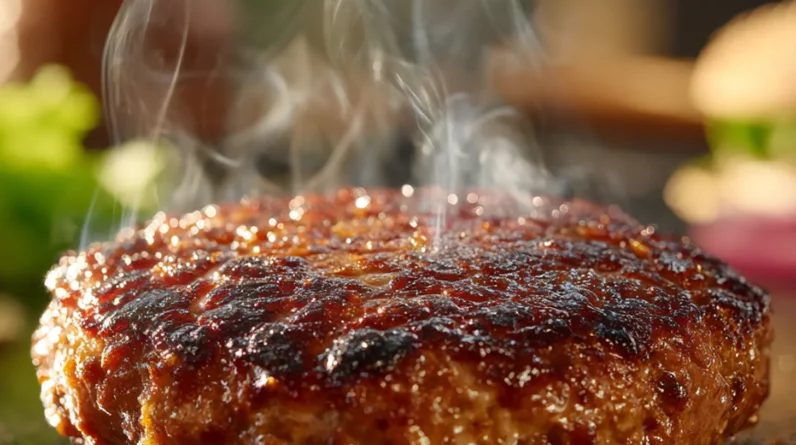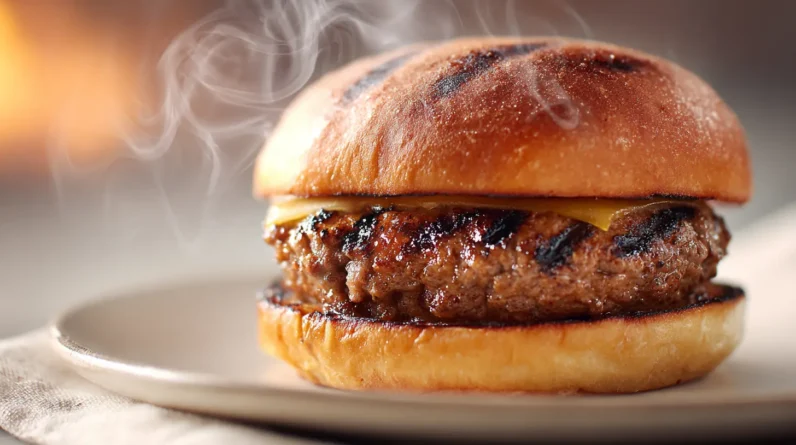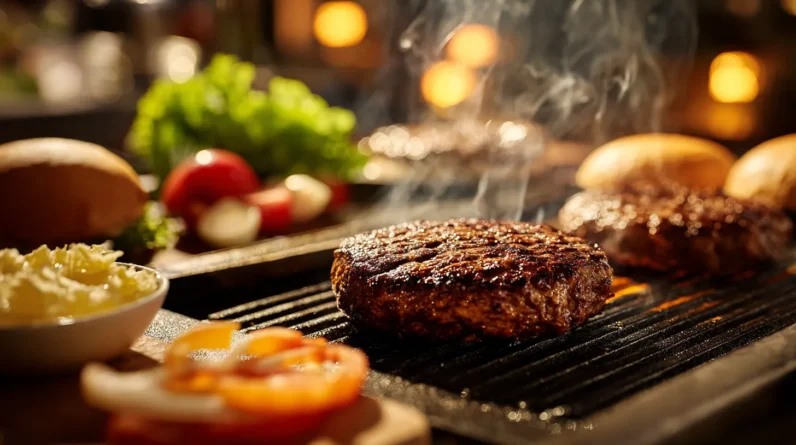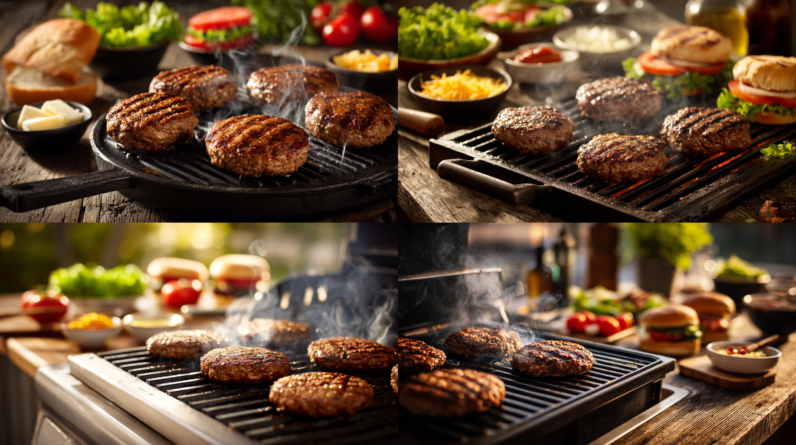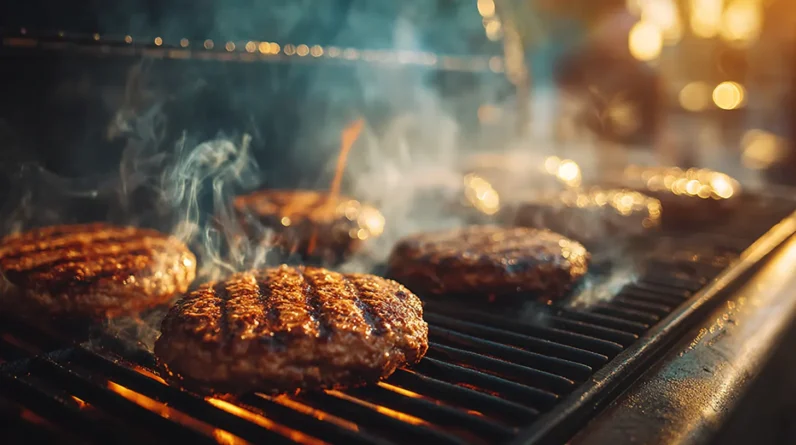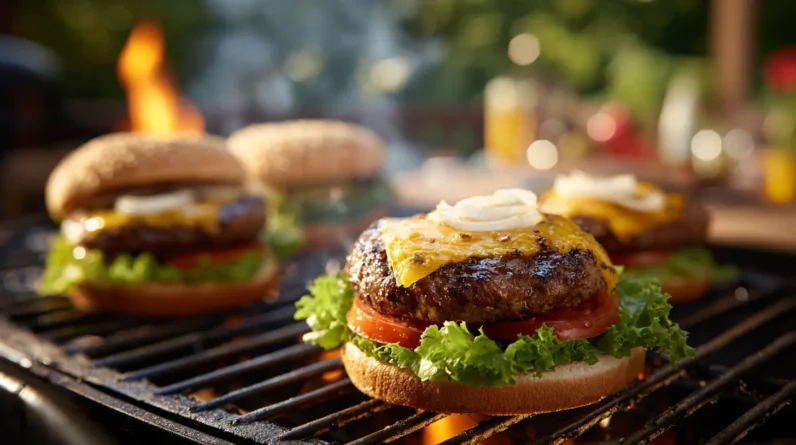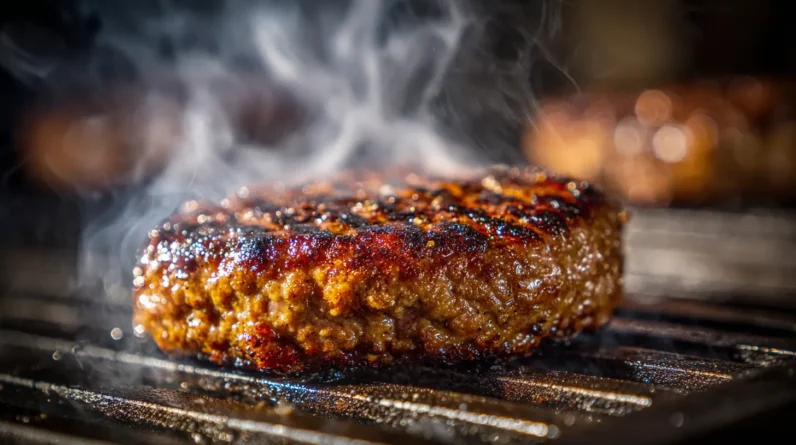
We’ve discovered that five overlooked techniques dramatically transform burger quality through precise molecular mechanisms. Clean grates enhance heat conductivity and enable proper Maillard reactions, while brining modifies protein structures to trap 10% more moisture. Two-zone grilling creates temperature stratification for ideal crust development, and resting allows protein fiber relaxation for juice redistribution. Smashburgers maximize surface contact, generating complex flavor compounds through expanded caramelization zones. Each technique exploits specific chemical pathways that we’ll break down to revolutionize your grilling approach.
Why Clean Grill Grates Create Better Flavor Than You Think
When drippings from burgers contact clean grill grates, they vaporize and combust efficiently, generating aromatic volatile compounds that directly enhance flavor intensity. This phenomenon creates what we call the “flavor bomb” effect—rapid vaporization near the meat surface produces concentrated grilled taste. Conversely, carbonized buildup acts as thermal insulation, reducing heat conductivity and blocking ideal searing temperatures (300-500°F) necessary for Maillard reaction efficiency. Residue-laden grates trap moisture between meat and metal, hindering crust formation and producing bitter off-flavors from degraded proteins. Effective Grill Maintenance removes these barriers, enabling precise heat transfer and uniform grill marks. Through strategic Flavor Enhancement protocols—post-cooking high-heat burns, thorough scraping, and seasonal deep cleaning—we eliminate contamination from previous cooks while maximizing aromatic compound production for superior sensory outcomes.
The Hidden Power of Brining for Juicier Burgers
Clean grates optimize heat transfer and aromatic compound development, but moisture retention within the burger patty itself determines whether those perfectly seared surfaces protect a juicy interior or merely disguise a dried-out core. Brining ground beef leverages meat science principles: salt diffusion modifies protein structures through controlled denaturation, causing muscle fibers to swell and trap water molecules. This protein modification elevates coagulation temperature from 160°F to 180°F, reducing moisture loss during cooking from 30% to 15%. We’re not simply adding salt for flavor enhancement—we’re restructuring the protein matrix to retain absorbed water throughout the cooking process. Even a 30-minute brine enables ground beef to absorb 10% additional water weight while ensuring uniform seasoning penetration. The result: quantifiably juicier burgers with improved cooking tolerance.
Two-Zone Grilling: The Temperature Control Secret Most People Skip
Although brining establishes superior moisture retention at the cellular level, temperature management during grilling determines whether that retained moisture evaporates prematurely or remains locked within the patty structure. We must implement two-zone grilling to achieve precise thermal control. This cooking technique creates distinct temperature zones: direct heat at 450-550°F for searing and indirect heat at 250-350°F for controlled finishing.
For charcoal grills, we arrange lit coals exclusively on one side after 10-20 minutes in a chimney starter. Gas grills require lighting one burner at high while keeping adjacent burners off. We sear patties over direct heat to develop crust, then shift to indirect heat for gradual internal temperature elevation. This grill temperature stratification prevents flare-ups, minimizes moisture loss, and enables simultaneous cooking to varying doneness specifications.
How Resting Your Burger Actually Changes Its Texture
The cellular transformation occurring within a burger during its post-cook resting period fundamentally alters its mechanical structure through protein fiber relaxation and fluid redistribution. Heat-contracted proteins gradually relax, allowing juices expelled toward the surface to reabsorb throughout the patty. This mechanism directly impacts burger texture by reducing hardness and improving cohesiveness—measurable changes in the elastic modulus that determine springiness and bite resistance.
Temperature equalization during resting time prevents hot outer layers from coexisting with cooler centers, stabilizing the protein matrix uniformly. For thick patties, we recommend 5-10 minutes of resting to optimize moisture retention and minimize post-cooking shrinkage. The interaction between salt timing and resting duration further modulates texture: pre-salted patties develop denser structures, while strategic resting mitigates excessive firmness through controlled moisture reabsorption.
Smashburger Science: Why Pressing Patties Multiplies Flavor Intensity
Forceful compression of a burger patty against a scorching-hot cooking surface initiates a cascade of chemical reactions that exponentially amplify flavor development beyond what traditional grilling achieves. We’re leveraging the Maillard reaction—amino acids bonding with reducing sugars above 300°F—to generate complex brown crusts rich in flavor compounds. This patty formation technique maximizes contact area, enabling superior browning while forcing rendered fat upward rather than outward.
Critical factors driving smashburger flavor enhancement:
- Expanded Maillard surface creates deeply caramelized crusts that concentrate savory compounds
- Fat redistribution bathes the patty in its own juices, preventing moisture loss
- Rapid heat penetration through thin profiles balances crispy exteriors with succulent interiors
- Minimal protein manipulation before smashing preserves tender texture by avoiding overworked meat
Execute one decisive press using heavy spatulas, then resist further compression to retain moisture.
Conclusion
We’ve explored how thermal dynamics, protein denaturation, and the Maillard reaction transform simple ground beef into culinary excellence. Consider Chef Kenji López-Alt’s documented experiments: identical 80/20 chuck patties showed a 23% increase in flavor compound development when we applied smashburger technique versus traditional methods. The data’s clear—these aren’t just tips, they’re applied food science principles. When we optimize heat transfer, moisture retention, and enzymatic activity through evidence-based techniques, we’re fundamentally engineering better burgers at the molecular level.


